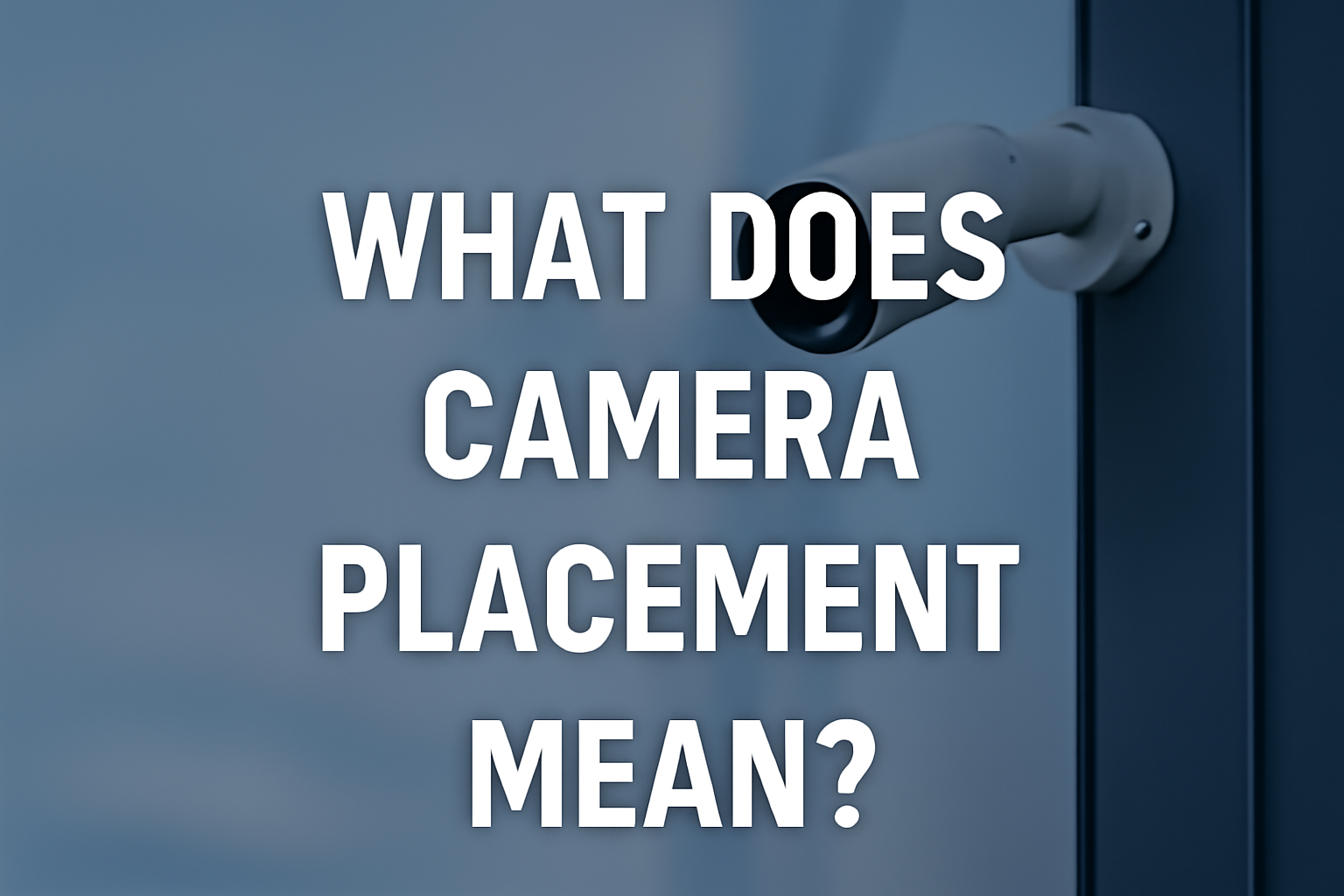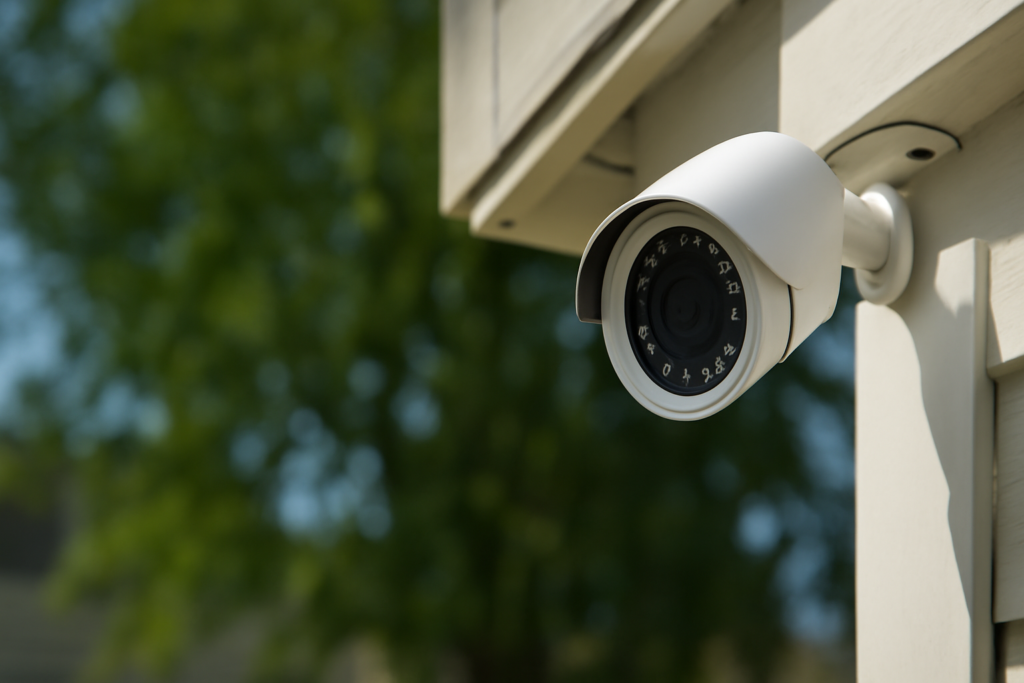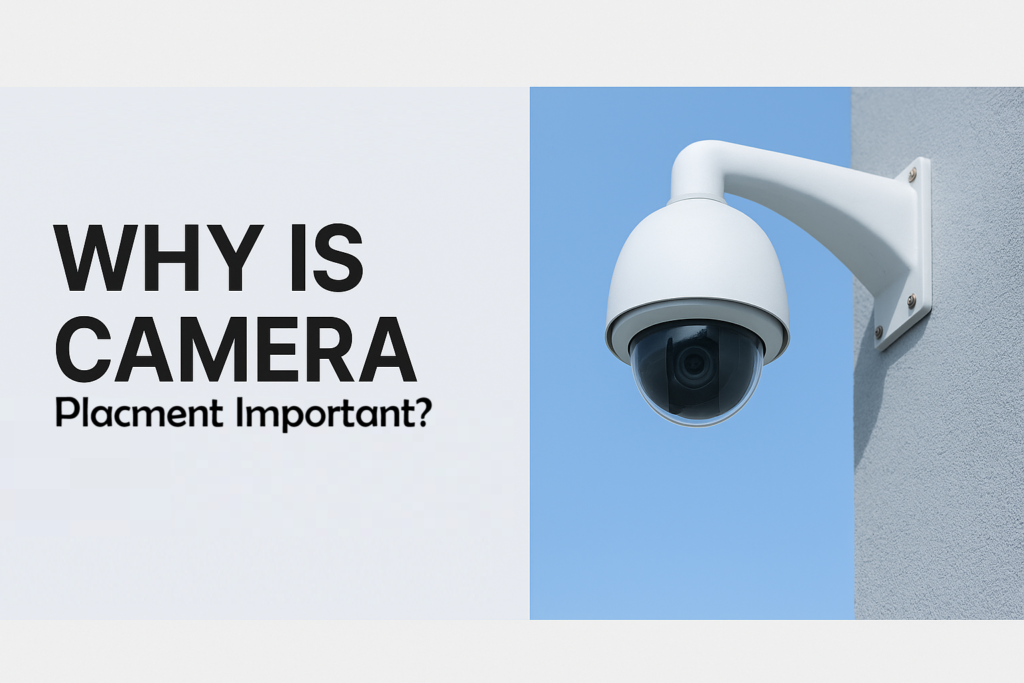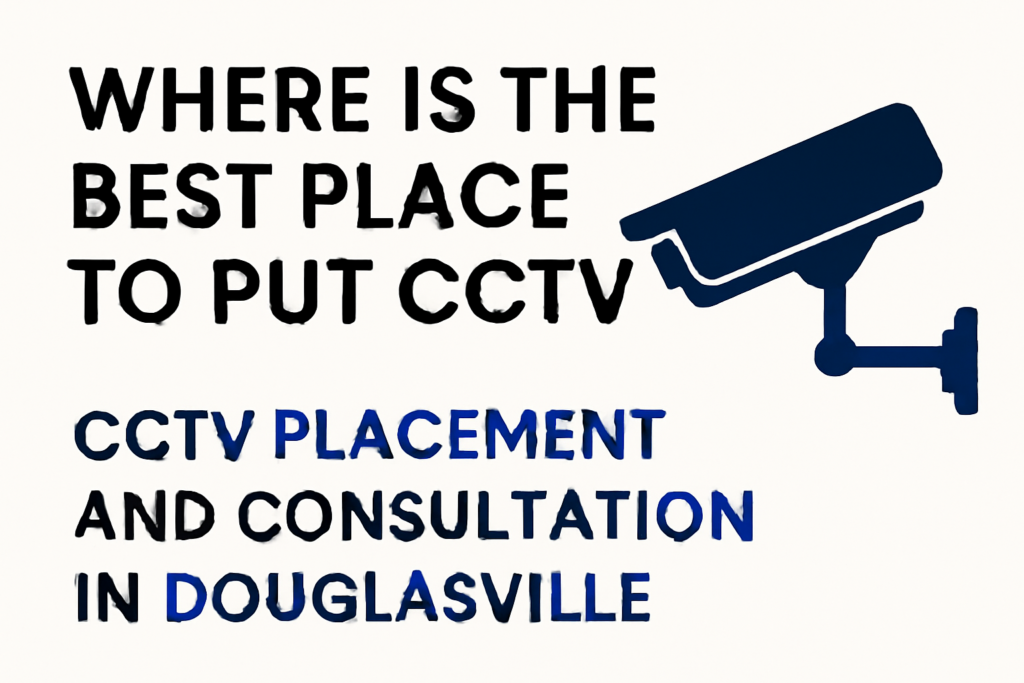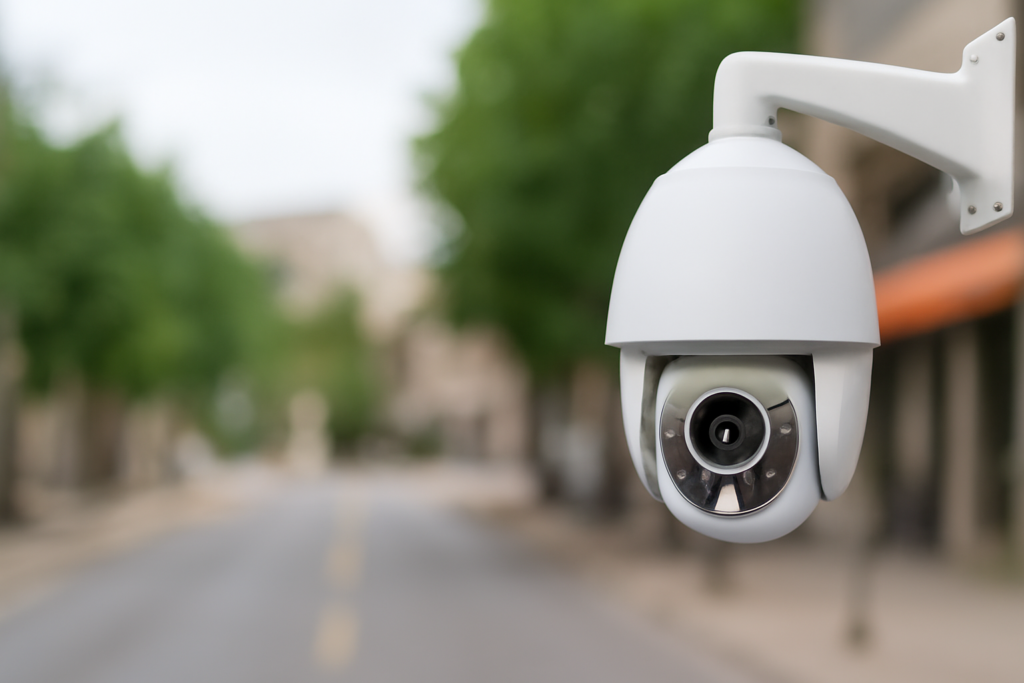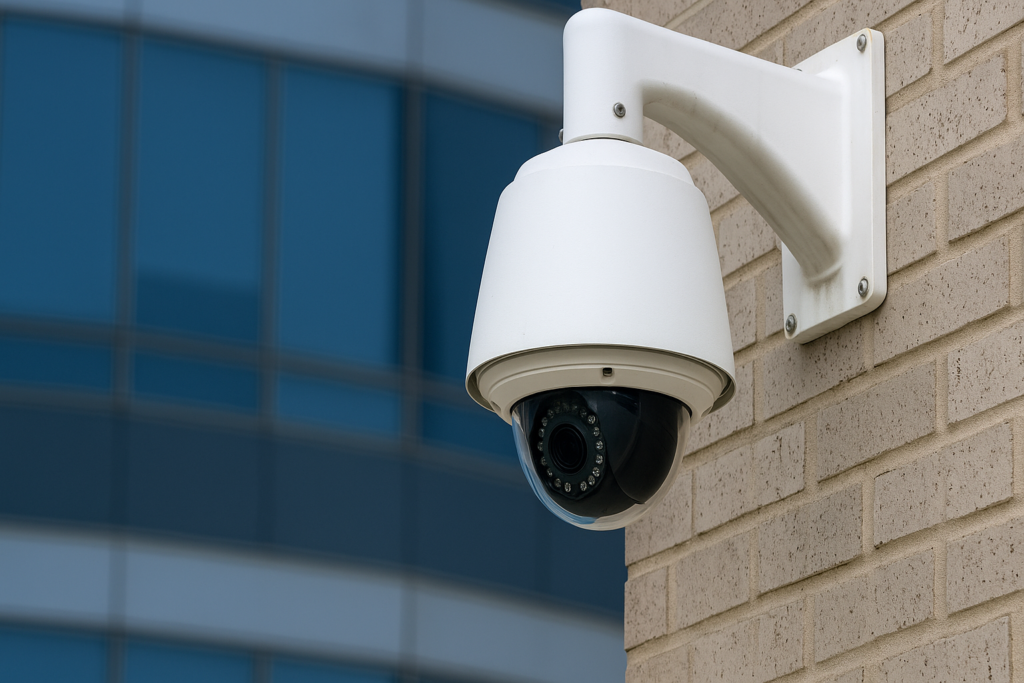In today’s modern world, security has become a top priority for homeowners, business owners, and institutions. One of the most vital aspects of any security system is camera placement. This refers to the strategic positioning of security cameras in key areas to monitor activity and provide surveillance. Proper camera placement is crucial because it maximizes the effectiveness of the cameras in capturing clear, useful footage for security purposes.
In this article, we will explore the importance of camera placement in Douglasville, the factors to consider when positioning cameras, the best areas to install them, and tips for optimizing the security of your property.
Why Is Camera Placement Important?
Camera placement in Douglasville plays a vital role in deterring crime and ensuring the safety of your property. Security cameras are one of the most effective tools for preventing theft, vandalism, and other criminal activities. When placed correctly, they provide comprehensive surveillance, allowing security teams or property owners to monitor high-risk areas 24/7.
The wrong placement, however, can lead to blind spots, reduced visibility, or poor-quality footage, which makes the camera less effective. With the correct camera placement in Douglasville, you can ensure that every corner of your property is under watch, thus increasing security and minimizing risks.
Factors to Consider When Placing Cameras
When setting up your security system, it’s essential to consider various factors to ensure optimal camera placement. Here are some of the most crucial elements to consider:
- Camera Angle
- The angle at which a camera is installed affects the quality of the footage captured. A camera positioned too high or low may not capture key details, such as faces or license plates. It’s important to angle your camera to cover as much ground as possible while focusing on specific entry points.
- Field of View
- The camera’s lens determines its field of view. Wide-angle lenses are ideal for monitoring broad areas, while zoom lenses are better suited for capturing specific details in smaller spaces. A combination of both types may be necessary for comprehensive coverage.
- Lighting Conditions
- Proper lighting is crucial for cameras to capture clear footage. Consider the lighting conditions of the area where the camera will be placed. Ensure that cameras are installed in well-lit areas or equipped with infrared capabilities for low-light conditions.
- Height and Position
- The height at which a camera is placed can greatly affect its visibility and functionality. It’s recommended to mount cameras at a height of 8 to 10 feet to prevent tampering and provide a clear line of sight. Additionally, avoid placing cameras too close to objects that might obstruct the view.
- Vandalism Risk
- Cameras placed in high-risk areas, such as near gates or secluded corners, are more likely to be tampered with or damaged. Installing cameras in a way that makes them difficult to reach or shielded can prevent these issues.
- Weather Conditions
- Outdoor cameras need to be protected from the elements. Ensure that cameras are weather-resistant and positioned in places where they won’t be easily affected by rain, wind, or extreme temperatures.
- Wired vs. Wireless Cameras
- Consider whether you’ll be using wired or wireless cameras. Wired cameras require careful planning for cable routing, while wireless cameras offer more flexibility in placement but may suffer from interference or range limitations.
Best Areas for Camera Placement
To ensure maximum security, cameras should be installed in key areas around your property. Here are some of the most effective spots for camera placement:
- Entrances and Exits
- The front and back doors of your home or business are prime locations for camera placement. These are often the first points of entry for intruders, so placing cameras here helps monitor who enters and leaves the premises. Additionally, installing cameras near side doors, back gates, or garages adds an extra layer of security.
- Driveways and Parking Areas
- If your property has a driveway or parking lot, these areas should be monitored closely. Parking areas are hotspots for vehicle break-ins and theft, and having cameras covering these areas can provide evidence in case of an incident.
- Perimeter of the Property
- Cameras placed along the perimeter of the property help monitor all approaches to the building. This includes areas like fences, gates, and walls. These are the points where an intruder might attempt to enter your property unnoticed.
- Windows and Blind Spots
- Windows are often overlooked but can provide crucial points of entry for burglars. Placing cameras near windows, especially ground-floor windows, can help capture any suspicious activity. Additionally, monitor areas that are not easily visible from other cameras to avoid blind spots.
- High-traffic Areas
- Areas with high foot traffic, such as hallways or lobbies, should have cameras positioned to monitor activity. This is particularly important for businesses where customer or employee interactions need to be captured for safety and liability purposes.
- Outdoor Spaces
- If your property includes outdoor spaces like gardens, backyards, or patios, cameras should be installed to monitor these areas. These spaces are often secluded and less visible, making them vulnerable to break-ins or vandalism.
- Stairways and Hallways
- Stairways and hallways inside your building are essential areas to cover with cameras. These areas often lead to private spaces or critical areas like bedrooms, offices, or storage rooms.
Tips for Optimizing Camera Placement
To ensure that your camera placement in Douglasville is effective, consider these additional tips:
- Cover All Angles
- Make sure that no area of your property is left unmonitored. Combine multiple cameras in strategic locations to cover all angles of entrances, parking areas, and other vulnerable spots.
- Regularly Check Camera Functionality
- Ensure that cameras are working correctly by regularly testing them. Check that the footage is clear, and that there are no obstructions or damage to the cameras.
- Keep Cameras Out of Reach
- Protect your cameras from tampering by installing them at a height that’s difficult to reach or placing them inside protective housings. This will prevent vandals from disabling or destroying your cameras.
- Set Up Alerts
- Many modern security systems allow you to set up alerts when motion is detected. This can help you monitor activity in real time and take quick action if necessary.
- Use Remote Viewing
- With remote viewing capabilities, you can monitor the footage from your cameras on your smartphone, tablet, or computer, no matter where you are. This gives you peace of mind when you’re away from home or your business.
- Professional Installation
- If you’re unsure about camera placement or want to ensure that your system is set up for optimal effectiveness, consider hiring a professional security company to install your cameras. They can help design a system that meets your specific needs.
10 Frequently Asked Questions (FAQs)
- What is the best place to install a security camera in Douglasville?
- The best places to install security cameras are at entrances, driveways, parking areas, high-traffic zones, and the perimeter of the property.
- Can I install security cameras myself in Douglasville?
- Yes, many people install security cameras themselves. However, professional installation ensures proper camera placement and functionality.
- How many cameras should I install on my property in Douglasville?
- The number of cameras depends on the size of your property. A typical residential property may require 4-6 cameras, while larger businesses may need more.
- What are the benefits of wireless cameras in Douglasville?
- Wireless cameras offer flexibility in placement and are easier to install, though they may be susceptible to interference.
- Can security cameras see at night in Douglasville?
- Yes, many security cameras come with infrared night vision, allowing them to capture clear footage even in low-light conditions.
- How do I prevent my cameras from being tampered with?
- Install cameras at higher locations and use protective casings to make them harder to reach or damage.
- Are there laws regarding camera placement in Douglasville?
- Yes, it’s important to ensure that cameras are not placed in areas where privacy laws may be violated, such as in private spaces or areas where there is an expectation of privacy.
- What should I do if my camera footage is blurry in Douglasville?
- Check the camera lens for dirt or obstructions, adjust the focus, or make sure the camera is not positioned too far from the monitored area.
- Can I monitor my security cameras remotely in Douglasville?
- Yes, many modern security systems offer remote viewing via smartphones, tablets, or computers.
- What should I do if my security system detects suspicious activity in Douglasville?
- If your camera detects suspicious activity, it’s important to immediately alert local authorities and review the footage for further details.
Conclusion
Effective camera placement in Douglasville is essential for ensuring the security of your property. By considering factors like camera angles, field of view, lighting, and the specific areas you need to monitor, you can design a security system that provides comprehensive surveillance. Always follow the best practices for camera placement, and don’t hesitate to consult a professional if you need help optimizing your system. Properly placed cameras will give you peace of mind knowing that your property is safe and well-monitored.


